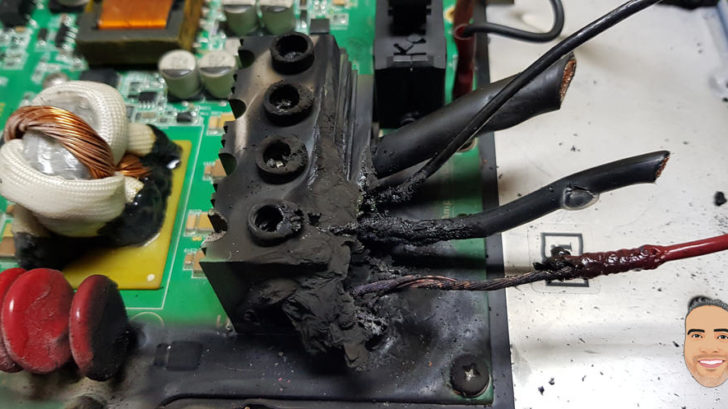
“When diving into the world of solar energy, it’s fascinating to note that charge controllers working beyond 150vdc have their quirks. One of the common hiccups? Arcing at the terminals. This typically occurs when they aren’t tightened just right. It’s a subtle reminder of the importance of meticulousness in the solar industry!”

In this instance, an issue arose with the FM100 model from Outback, which is designed to accept up to 300VDC. Unfortunately, the technician did not establish an accurate connection on the PV side, where voltages can reach as high as 300Vdc. Consequently, there was a delay in extinguishing the arc, resulting in the terminal melting and leaving the terminals exposed.
Refer to the accompanying video to observe the process of switching a 2600-watt load using 220Vac and subsequently with 220 Vdc (which, when rectified, increases to 311Vdc).
The Importance of Safety Precautions in High-Voltage Solar Installations
When it comes to working with solar panel systems, there’s a marked difference in how many technicians approach their tasks. Alarmingly, there’s a tendency among some technicians to overlook essential safety precautions, especially when dealing with high-voltage DC systems.
Consider this: the standard MPPT charge controllers you often come across in the market usually have a maximum voltage acceptance of 150Vdc. As a result, installing three panels in series has become a routine practice for many technicians. However, the real challenge arises with the introduction of PV inverters designed to accept as high as 600 or even 1,000 Vdc. In such scenarios, technicians may find themselves working with close to 1,000 volts without adhering to vital safety measures.
To give you a clearer picture, here are some popular models and their voltage acceptances:
Charge Controllers:
- Schneider Conex MPPT 100-600: Accepts up to 600Vdc
- Victron SmartSolar RS 450: Accepts up to 450Vdc
- Outback FM100: Accepts up to 300 Vdc
PV Inverters: Most PV inverters on the market can accommodate voltages ranging from 600 to 1,500 vdc. Notable brands include SMA, Fronius, Kaco, CPS, and Tabushi.
For these high-voltage installations, I highly recommend opting for fuses over breakers. Additionally, it’s imperative to double-check and retighten all terminals after any installation or commissioning to ensure safety and optimal performance.









GIPHY App Key not set. Please check settings